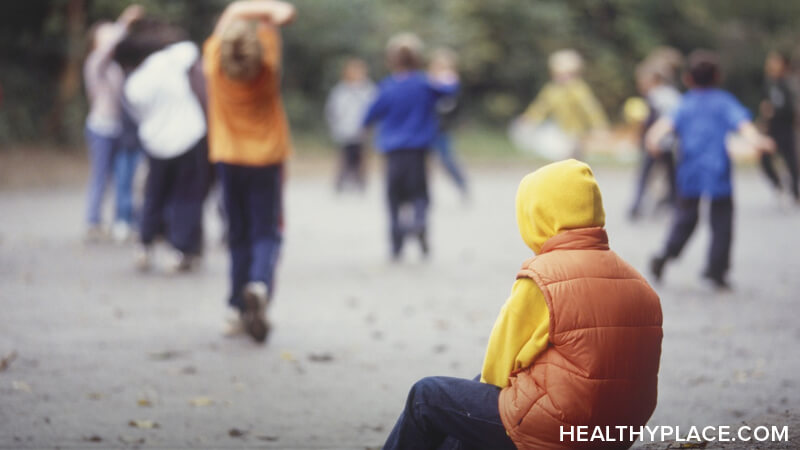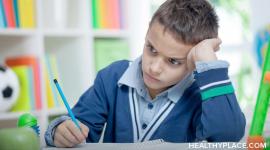ADHD and the Risk of Antisocial Behavior

Is there a direct relationship between a child's learning disability and his or her disruptive or delinquent antisocial behaviors?
Jeff
Jeff is in trouble at school...again. His mother was called.... again. "There was another fight. He raised his scissors to another student and threatened him," states the school principal. "Jeff is an at-risk student. He's headed for delinquency, school drop-out, and other emotional problems."
Jeff has a learning disability (LD) that interferes with his ability to read. "His LD," states the principal, "is the cause of this behavior." Jeff's mother feels helpless hearing these words. She does not know how to stop Jeff's aggressive behavioral outbursts. She does not know, either, if she believes the principal.
Policy
Policy makers, too, are in a quandary. As school violence seems to escalate with events such as the Columbine shootings increased requests for a "zero tolerance" policy are voiced. This means that some parents, teachers, and lawmakers are requesting legislation to assure that children who engage in violent behaviors that threaten others are expelled from school.
Others ask, "If Jeff's learning disability contributes to the antisocial behavior should he be disciplined in a manner similar to non-disabled students?" Answers are complicated. School may make Jeff feel more anxious and tense due to his disability. Rigid discipline structures make these feelings worse possibly escalating his antisocial behaviors. Expulsion further limits his chances for success.
The Classroom
Teachers trained to help students with learning disabilities are essential to Jeff's positive transition to adulthood. Two facets of their roles are especially critical:
- understanding causative relationships between a student's LD and his or her antisocial behaviors
- developing "risk preventative strategies" to help a child with LD achieve resiliency that can prevent future antisocial behaviors
These facets will, or course, interact with a child's inborn traits (personality, cognitive ability, and degree of disability) family and community structures, supports, and beliefs.
Is there a direct causative relationship between a child's learning disability and his or her disruptive or delinquent antisocial behaviors? Children with learning disabilities may misread social cues or act impulsively. Their "social scanners" that help them read the intent of another's behaviors; that is, their information processing systems, do not work as efficiently as those of other children. A classmate borrows another's pencil without asking. A child without effective social scanners may see only the "pencil taking." S/he does not consider intent and responds aggressively.
Children with LD also often find themselves, by virtue of their disability, in the lower rungs of the academically defined social status among their peers. Even though a teacher assigns labels such as "bluebirds" or "robins" to reading groups, children know who are the best readers, best spellers, and prized students. Students with LD often feel the pain of not being among those students. They know they try so much harder. They see little benefit from effort and worry about disappointing parents, teachers and themselves.
Disadvantaged social position, combined with inability to accurately read social cues, and a sense that no matter how hard you try you cannot achieve in school as well as other classmates, or your siblings, creates a recipe for frequent disruptive antisocial behaviors. Acting out releases feelings of frustration. It gives a time-out from anxiety. Thus it can be self-reinforcing. It also distracts an audience of peers, parents and teachers, from the real problems of LD. Jeff can define himself as the "best trouble maker" not the poorest student!What makes this even more frustrating for Jeff, his parents and his teachers is the fact that Jeff may really not know what caused the fight. Redl (1968) identified a classroom counseling/crisis intervention approach, a life-space interview, that offers teachers "here and now" strategies to help a child understand the origin of problem behaviors so that behavior change can begin. Through a technique of "emotional first aid on the spot", the teacher helps the student drain off the frustration in order to be ready to understand the causes of the disruptive behavior by using a technique called reality rub-in. The teacher helps the student discover new ways to handle a precipitating event. This also involves helping the child understand self-boundaries. Children who feel disadvantaged among peers will often allow others to take advantage of them. In so doing they seek to gain peer favor. When this does not follow the urgency of frustration escalates.
Jeff, I saw that Bill picked up your special pencil. It made you very angry... so angry that you hit him and threatened to 'kill him' with your scissors. This worried the other kids. They were scared because that is not how they would have acted. Jeff, you play so well on the playground with your friends. I bet Bill did not know how really important that pencil was to you. Let's look to see if we can find how the fight began. OK? Then we can see if we can practice other ways to solve it.
The teacher identifies the behavior that Jeff knows got him in trouble, the fight; helps Jeff know where there may have been a misperception; gives a positive self-statement that Jeff can use to anchor his self-esteem in some way; and says that s/he is there to help Jeff solve the problem. The teacher knows, too, it may take many times before Jeff will begin to put solution into practice. Family factors, too, influence a child's behaviors. Children develop best when there is a consistently supportive family structure. When a family is troubled there is a disequilibrium that will cause most children stress.
Parents
Additionally, parents of children with a learning disability may experience feelings of helplessness, or despair, that can impact their perceptions of their child. This can result in low expectations for achievement, inconsistent parenting, and sadness because a child is not "normal." Children internalize their parents' perceptions. Such perceptions can further increase anxiety and augment the cycle of antisocial behavior.
Teachers that collaborate effectively with parents help produce resilience in students with LD. Overwhelmed parents need reassurance and help re-framing their perception of their child. They see a disruptive child who is always in trouble. Teachers can direct focus to a child's strengths and how to develop those strengths. Some parents need more help. In such cases a trained professional is an important ally.
In Summary
Children with learning disabilities may be at greater risk for disruptive antisocial factors. Several interactive factors explain this. These include internal dispositions, school, family, and community factors. Teachers can provide a critical preventative role by helping a child understand the cause of disruptive behaviors, establishing positive collaborations with the family and by knowing when to help the parent seek further professional help.
About the author: Dr. Ross-Kidder is a faculty member of the Department of Psychology at The George Washington University, a former teacher in both private and public education and a licensed school psychologist who has worked extensively in public education and private practice helping children with learning disabilities and/or ADHD and their parents.
APA Reference
Staff, H.
(2021, December 20). ADHD and the Risk of Antisocial Behavior, HealthyPlace. Retrieved
on 2026, January 19 from https://www.healthyplace.com/adhd/children-behavioral-issues/adhd-and-risk-of-antisocial-behavior



